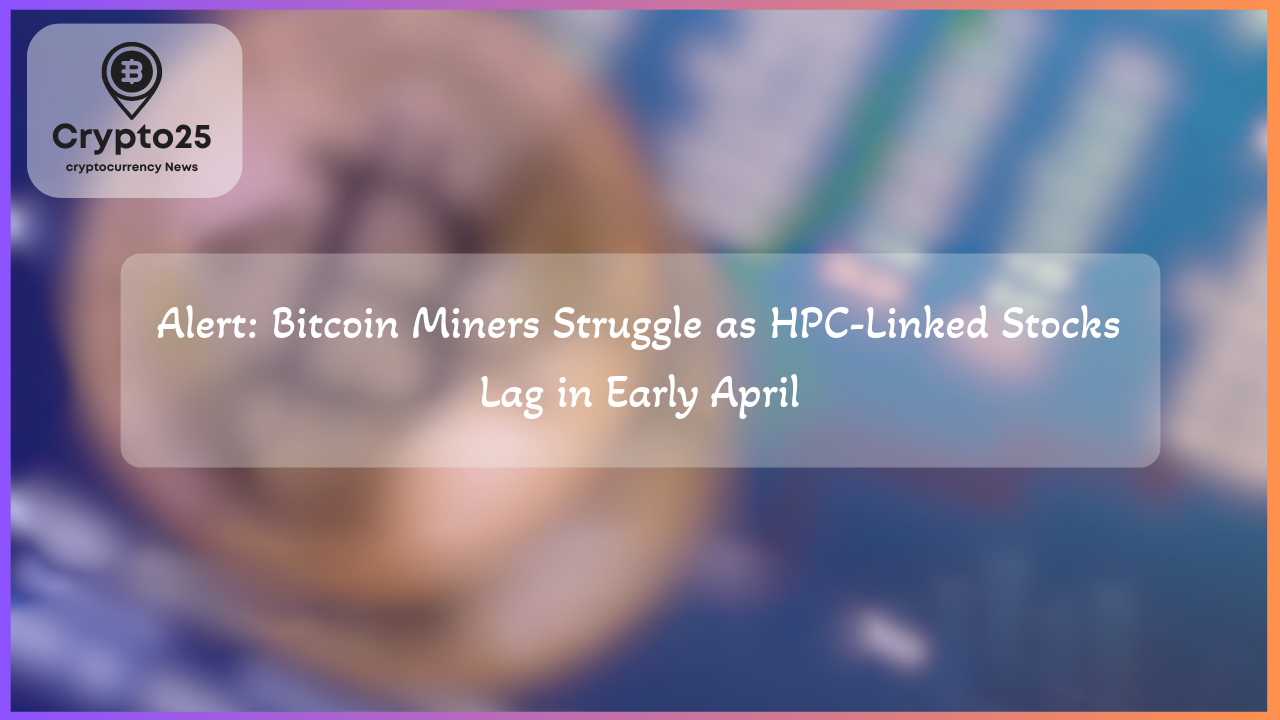
The world of Bitcoin mining continues to evolve, and with it, the performance of Bitcoin mining stocks fluctuates in response to dynamic market conditions. In the first half of April, several mining companies showcased varying performance trends, with notable differences across pure-play Bitcoin miners and those with exposure to high-performance computing (HPC). Understanding these developments offers critical insights into the broader cryptocurrency mining landscape.
### Bitcoin Mining Stocks Show Varied Performance in Early April
Bitcoin mining stocks experienced a mixed performance during the initial weeks of April, reflecting broader industry trends. Notably, pure-play Bitcoin miners like MARA Holdings (MARA) and CleanSpark (CLSK) outperformed Bitcoin itself during this period. These companies, driven by their sole focus on cryptocurrency mining, benefited from a strategic alignment with Bitcoin market dynamics.
On the other hand, miners such as Bitdeer (BTDR), TeraWulf (WULF), IREN (IREN), and Riot Platforms (RIOT)—which also have investments in high-performance computing used in applications like artificial intelligence (AI)—lagged behind. This underperformance suggests that diversification into HPC may not always lead to immediate profitability when broader Bitcoin market trends shift downward. JPMorgan analysts highlighted that while March was a strong month for U.S.-listed Bitcoin miners in terms of mining capacity growth, April has not followed suit, with several economic pressures weighing on the sector.
### Declining Hashrate Economics and Its Impact on Bitcoin Miners
One of the most influential factors in the current Bitcoin mining landscape is the overall network hashrate, which refers to the total computational power used to mine Bitcoin and verify transactions on its blockchain. According to JPMorgan’s report, the global Bitcoin network hashrate increased significantly, rising by 85 exahashes per second (EH/s) month-to-date, resulting in an average of 900 EH/s during the first half of April. This growth has created increased competition among miners, further narrowing profit margins.
The report also emphasized a key metric: miners’ daily block reward revenue. In the first two weeks of April, daily revenue dropped to $41,500 per EH/s, reflecting a sharp 12% decline from March. This dip was attributed to Bitcoin’s declining prices during the same period, paired with the growing mining difficulty associated with the expanding hashrate. As more miners come online and computational competition rises, the economics of Bitcoin mining become increasingly challenging for operators.
The overall market capitalization of U.S.-listed miners also took a hit, dropping 2% to $16.9 billion in April. JPMorgan analysts suggested that these companies are currently trading near their lowest valuation relative to the four-year Bitcoin block reward opportunity in over two years. This underscores the tightening economics of Bitcoin mining, where profitability becomes harder to sustain when external factors like Bitcoin’s price and mining difficulty shift.
| Title | Details |
|---|---|
| Market Cap | $16.9 Billion |
| Network Hashrate | 900 EH/s |
| Daily Miner Revenue | $41,500 per EH/s |
| Mining Stock Metrics | 1.2x Four-Year Block Reward Opportunity |
### The Future of Bitcoin Mining Amid Increasing Challenges
The rising network hashrate and declining mining economics paint a complex picture for the future of Bitcoin mining. While companies like MARA Holdings and CleanSpark demonstrate that outperformance is achievable, the broader industry faces headwinds from increased competition and fluctuating Bitcoin prices. Mining firms must now consider strategic innovation and cost efficiencies to remain competitive in an increasingly saturated market.
Furthermore, the integration of Bitcoin mining with HPC and AI applications—initially seen as a diversification opportunity—seems to carry its own risks, as shown by the underperformance of hybrid miners during the analyzed period. Still, strategic investments in diversified computing may prove beneficial in the long term if Bitcoin mining firms successfully balance their exposure to different markets.
In conclusion, the latest trends in Bitcoin mining stocks highlight the importance of closely monitoring network metrics like hashrate, competition, and daily block reward revenue. These indicators not only reflect the current state of the market but also guide investors and stakeholders as they navigate the evolving world of cryptocurrency mining. For both individual miners and publicly traded companies, adjusting to these developments will be vital for long-term sustainability in this volatile industry.
